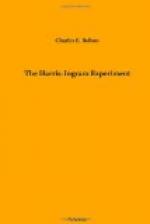Finally Leo, who knew much of the old masters of Europe, took Alfonso to see the Musee Wiertz, which contains all the works of a highly gifted and eccentric master. In a kind of distemper Wiertz painted Napoleon in the Infernal Region, Vision of a Beheaded Man, A Suicide, The Last Cannon, Curiosity, and Contest of Good and Evil, Hunger, Madness and Crime, etc. As Brussels is located near the center of Belgium, the city is very convenient to several cities that contain many works attractive to painters and architects.
On arrival at Antwerp Alfonso and Leo rode to one of the stately cathedrals, near which a military band was playing. Before the church stood a bronze statue of Peter Paul Rubens. The scrolls and books, which lie on the pedestal, with brush, palette, and hat, are allusions to the varied pursuits of Rubens as diplomatist, statesman, and painter. The two young artists hastened into the cathedral to see Rubens’s famous pictures, The Descent from the Cross, and The Assumption. His conception and arrangement were admirable, his drawing carefully done, and his coloring harmonious and masterly.
Rubens, the prince of Flemish painters, was knighted. He was handsome and amiable, and his celebrity as an artist procured for him the friendship and patronage of princes and men of distinction throughout Europe.
Not far from the cathedral the young artists came to the museum, in front of which rises a statue to Van Dyck, pupil of Rubens. “Here, Alfonso,” said Leo, “is encouragement for you, for Van Dyck like yourself was the son of a wealthy man or merchant of Antwerp. He was educated in Italy, where he executed several fine portraits which I saw in Genoa as I journeyed to Paris.” Charles I. of England appointed Van Dyck court-painter and knighted him. Van Dyck’s ambition was to excel in historical works, but the demand upon him for portraits never left him much leisure for other subjects. How often “man proposes, but God disposes.”
Alfonso and Leo reached Dort or Dordrecht, which in the middle ages was the most powerful and wealthy commercial city in Holland. Huge rafts float down from the German forests, and at Dordrecht the logs are sawed by the many windmills. The Dutch province of Zealand is formed by nine large islands on the coast of the North Sea, and it has for its heraldic emblem a swimming lion with a motto Luctor et Emergo.
Most of the province, which is created by the alluvial deposits of the Scheldt, is below the sea-level, and is protected against the encroachments of the sea by vast embankments of an aggregate length of 300 miles. Willows are planted along the dykes, the annual repairs of which cost $425,000. An old proverb says, “God made the land, we Dutch made the sea.”
This fertile soil produces abundant crops of wheat and other grain. Near Dort is a vast reed-forest, covering more than 100 islands, which is also called, “Verdronken land,” drowned land. This area of forty square miles, once a smiling agricultural tract, was totally inundated on the 18th of November, 1421. Seventy-two thriving market towns and villages were destroyed, and 100,000 persons perished. Leo made a sketch of the tower of Huis Merwede, the solitary and only relic of this desolate scene.




